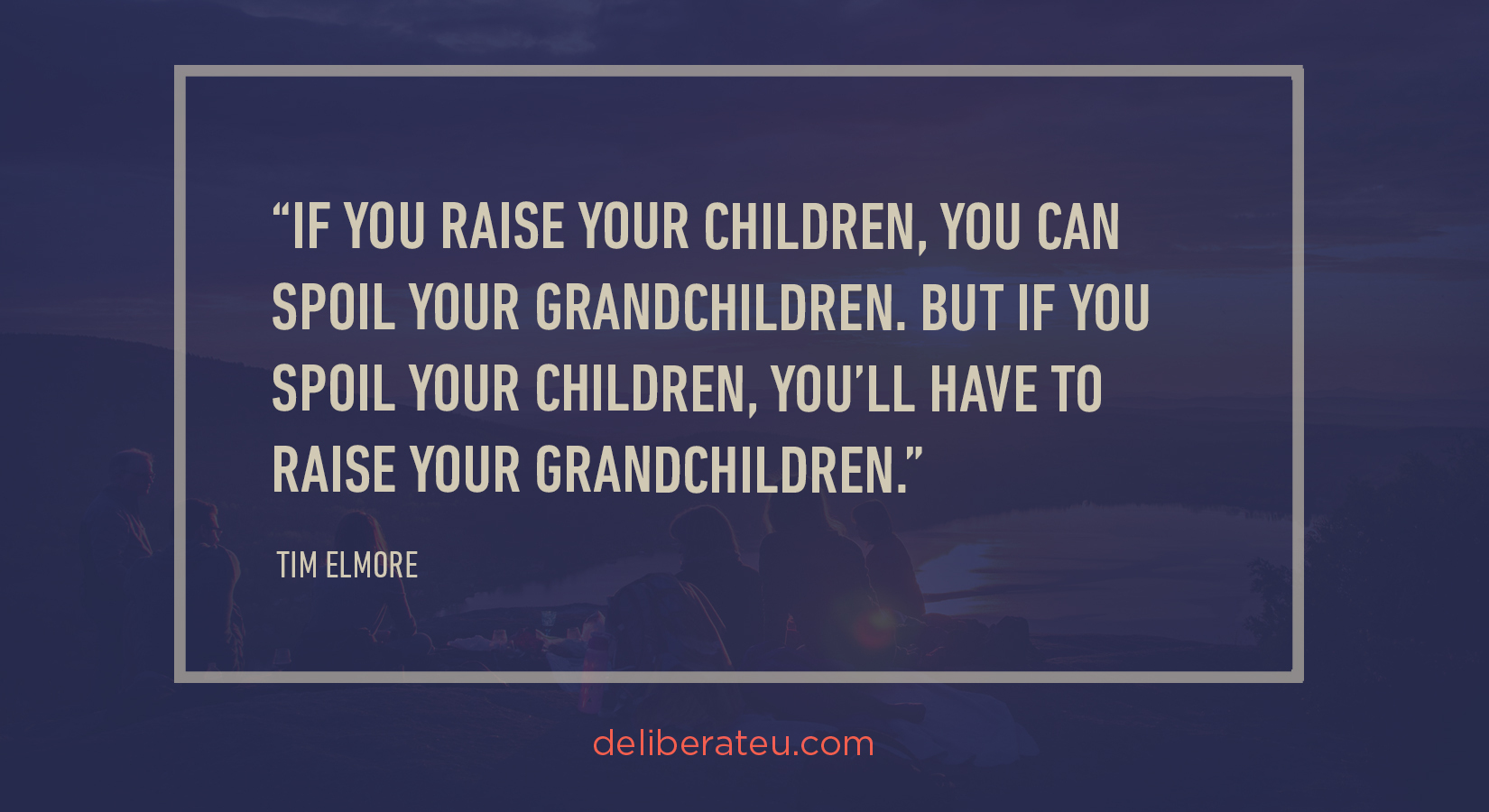The following contribution comes from a blog posting by Tim Elmore
I want to tell you a story that is informative to parents. Today—I am writing to parents. As we begin a new year, this is the perfect time to establish new habits and set new standards.
The McCormicks have two sons and a daughter. Their boys are teens, ages 14 and 16 and their daughter is 11. If you met them, you’d see an average middle-class, American family who’s trying to help their children through school, sports, and video games without going broke or having a nervous breakdown. (I’m exaggerating.)
When I met them, they were full of questions about their children.

The Slow Drift
Fifteen years ago, they decided they were going to be intentional about limiting the screen time for their kids; they chose to encourage extra-curricular activities since that looks good on a transcript and they began saving for college tuition payments. Today, the picture is different. They admit they’ve been guilty of a “slow drift.” All that intentionality got lost in the busyness of middle school and high school.
- All three of their kids spend far too much time on screens with social media.
- Their kids are over-committed with sports, clubs, theatre, and youth groups.
- They enjoy precious little time together over meals each week.
- They spend far more money than they budgeted for their kids’ activities.
- Their boys seem to be addicted to video games and get angry at stop time.
- They’re in a vicious cycle of buying the latest Apple portable devices for them.
- They got suckered into the assumption they must buy cars for their teens.
- They have not saved enough money to come close to college tuition payments.
How did this happen? Does this sound familiar?
My friend David Christie recently shared a statement with me that explains so many of today’s challenges with kids.

Far too often, parents reach the end of the parenting journey (when their kids are two decades old) and they find those kids are unready for what comes next. Why? We failed to be intentional about preparing them. Now, they need more parenting.
What Happened to Intentional Living?
Our problem is not intention; we all intend to raise good kids. Our problem is hectic lifestyles. We become so busy—we unwittingly shift into defensive mode. We stop playing offense and play defense; we begin reacting to all the events, payments, and demands that today’s “system” places upon us.
We fail to heed our intentions and turn them into intentionality.
Below, I offer a starter list for leading your kids intentionally this new year. I’ve chosen six categories to be intentional about when it comes to raising them instead of spoiling them. I hope these spark your own thoughts.
Six Steps to Becoming Intentional in 2022
- Determine screen time and its replacement.
This is the most common category that parents get off track and fail to lead their kids—especially their teens. Part of the reason for the mental health challenges kids face today is social media and the high number of hours teens spend on a portable device. Dr. Jean Twenge notes that two hours or more per day puts them at a greater risk of anxiety and depression. Less than two hours a day makes them less vulnerable to such mental health issues.
- Determine family time and what will be engaging.
Studies have shown that families who enjoy meals together also enjoy greater satisfaction and less stress than those who don’t. As our kids were growing up we tried to schedule at least three dinners a week at our kitchen table. When they were teens we also tried to insert at least one monthly family date. This meant we limited their extra-curricular activities to one per semester.
- Determine financial boundaries.
This one is tough because we are frequently guilty of merely reacting to bills and invoices instead of planning our spending. We follow this simple rule: give first, save second, and live on the rest. This means we choose the charitable giving we want to do and decide our amount each month; then we put money in savings, and then we see what we have left to cover all else. This offers a guideline for the emotional conversation about buying “stuff” for your kids.
- Determine service projects.
As our kids grew older it became more challenging to do this one together. But, we attempted to schedule one time a month to find a place to serve together. It may be a homeless shelter; it may be a local food pantry or a department in a local church. For years, we sponsored a child overseas (in Africa) to fund his or her education and personal needs. This gave us perspective on our own “first world problems” and conditioned us to be generous and grateful.
- Determine growth and quiet time.
We didn’t do this as regularly as we should have. But after researching the topic, I believe kids (especially Generation Z) need time when it’s quiet. This can be reading time; or journaling time, or a project where they learn to think critically. Neuroscientists say silence and solitude cultivate creativity and empathy in us. This counter-cultural act won’t make sense at first to adolescents. I’m convinced that it will foster peace of mind.
- Determine work time and chores.
If you don’t plan this, it usually doesn’t happen with most tweens and teens. I believe it is healthy for every family member to contribute to the family, by doing age-appropriate tasks around the home—and eventually working a job. Both of my kids had jobs by age 16, learning work ethic and managing money.
You may have other categories to be intentional about, but I hope these offer a jump start.

